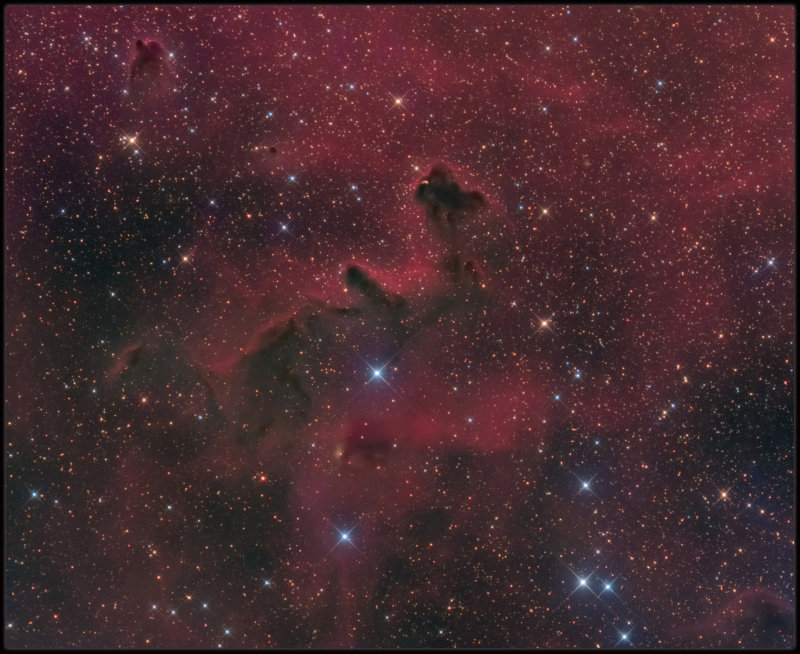 The Heart Nebula by Gabe Shaughnessy, on Flickr
The Heart Nebula by Gabe Shaughnessy, on FlickrSubmissions: 2020 February
-
masahiro miyasaka
- Ensign
- Posts: 39
- Joined: Fri Dec 31, 2010 12:37 pm
- Contact:
Re: Submissions: 2020 February
NGC 2467 - My version...
Full frame:
https://pbase.com/tango33/image/170429227/original
Cheers,
Kfir Simon
Full frame:
https://pbase.com/tango33/image/170429227/original
Cheers,
Kfir Simon
Re: Submissions: 2020 February
The Christmas tree and Cone nebula region:
Full frame:
https://pbase.com/tango33/image/170461158/original
Cheers,
Kfir Simon

Full frame:
https://pbase.com/tango33/image/170461158/original
Cheers,
Kfir Simon

Re: Submissions: 2020 February
The Seagull nebula
Full frame:
https://pbase.com/tango33/image/170428692/original
Cheers,
Kfir Simon
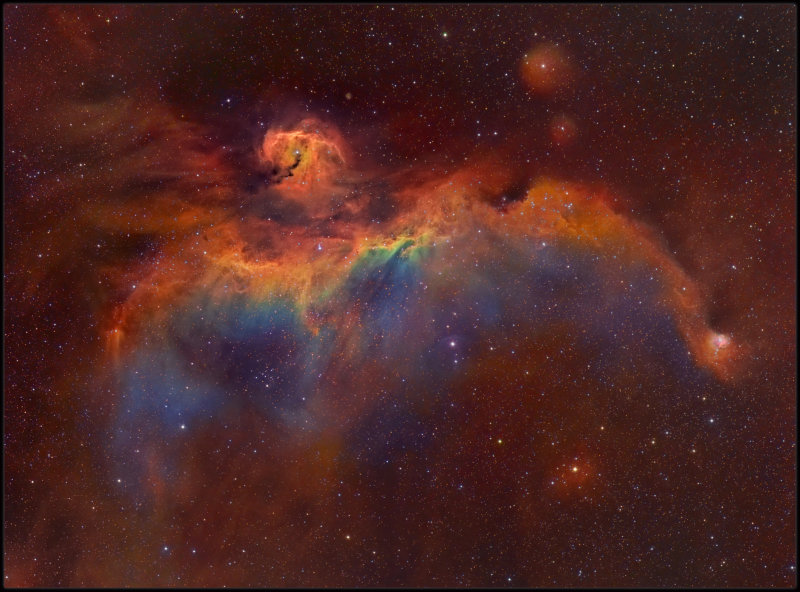
Full frame:
https://pbase.com/tango33/image/170428692/original
Cheers,
Kfir Simon

Re: Submissions: 2020 February
NGC 3572 in 2 versions:
Hubble pallate
Full frame:
https://pbase.com/tango33/image/170169774/original
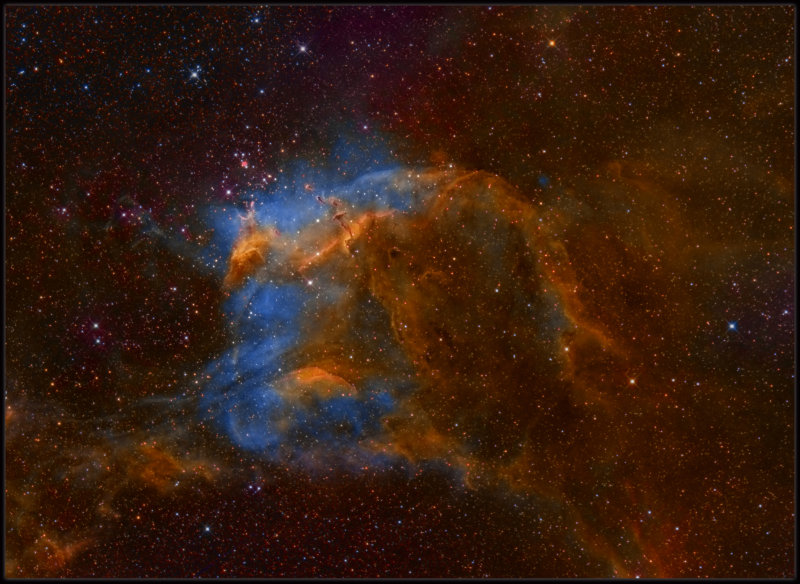
And in LRGB:
Full frame:
https://pbase.com/tango33/image/170169772/original

All the best,
Kfir Simon
Hubble pallate
Full frame:
https://pbase.com/tango33/image/170169774/original

And in LRGB:
Full frame:
https://pbase.com/tango33/image/170169772/original

All the best,
Kfir Simon
-
KuriousGeorge
- Science Officer
- Posts: 218
- Joined: Wed Dec 30, 2015 7:07 am
- Location: San Diego, CA
- Contact:
Re: Submissions: 2020 February
Hard to believe the four prominent galaxies in this group are 100 million light-years distant! Selective star shrink helped preserve the far more distant ones.
Skies were very dark, clear and steady for the 6 hours of luminance. Skies were also dark for RGB, but wind gusts were up to 10 mph. I deleted some R captures with aspect ratios close to 20% to help minimize noticeable red protrusions around the bright stars.
"Scanning the skies for galaxies, Canadian astronomer Paul Hickson and colleagues identified some 100 compact groups of galaxies, now appropriately called Hickson Compact Groups. The four prominent galaxies seen here are one such group, Hickson 44, about 100 million light-years distant toward the constellation Leo. The two spiral galaxies in the center of the image are edge-on NGC 3190 with its distinctive, warped dust lanes, and S-shaped NGC 3187. Along with the bright elliptical, NGC 3193 at the right, they are also known as Arp 316. The spiral in the upper left corner is NGC 3185, the 4th member of the Hickson group. Like other galaxies in Hickson groups, these show signs of distortion and enhanced star formation, evidence of a gravitational tug of war that will eventually result in galaxy mergers on a cosmic timescale. The merger process is now understood to be a normal part of the evolution of galaxies, including our own Milky Way. For scale, NGC 3190 is about 75,000 light-years across at the estimated distance of Hickson 44."
https://www.astrobin.com/n8fyeg/
Skies were very dark, clear and steady for the 6 hours of luminance. Skies were also dark for RGB, but wind gusts were up to 10 mph. I deleted some R captures with aspect ratios close to 20% to help minimize noticeable red protrusions around the bright stars.
"Scanning the skies for galaxies, Canadian astronomer Paul Hickson and colleagues identified some 100 compact groups of galaxies, now appropriately called Hickson Compact Groups. The four prominent galaxies seen here are one such group, Hickson 44, about 100 million light-years distant toward the constellation Leo. The two spiral galaxies in the center of the image are edge-on NGC 3190 with its distinctive, warped dust lanes, and S-shaped NGC 3187. Along with the bright elliptical, NGC 3193 at the right, they are also known as Arp 316. The spiral in the upper left corner is NGC 3185, the 4th member of the Hickson group. Like other galaxies in Hickson groups, these show signs of distortion and enhanced star formation, evidence of a gravitational tug of war that will eventually result in galaxy mergers on a cosmic timescale. The merger process is now understood to be a normal part of the evolution of galaxies, including our own Milky Way. For scale, NGC 3190 is about 75,000 light-years across at the estimated distance of Hickson 44."
https://www.astrobin.com/n8fyeg/
-
PatrickWinkler
- Ensign
- Posts: 82
- Joined: Wed May 25, 2016 4:24 pm
- Location: Traiskirchen (Austria)
- Contact:
Re: Submissions: 2020 February
NGC 2841
info: https://www.celestialobjects.net/ngc2841.html
larger: https://www.celestialobjects.net/assets/ngc2841_f.jpg
Patrick Winkler
info: https://www.celestialobjects.net/ngc2841.html
larger: https://www.celestialobjects.net/assets/ngc2841_f.jpg
Patrick Winkler
-
klacsanyimre@gmail.com
Re: Submissions: 2020 February
http://www.emrefoto.hu/sh2_132.htm
Sh2-132 oroszlán köd
SW EQ-6 goto
Mgen csipke vezérelve
200 = 800SW Newton Astrograph
Hungary Dunapataj
28x10min iso 800
Canon600D mod érzékelő hűtés -9C
Sh2-132 oroszlán köd
SW EQ-6 goto
Mgen csipke vezérelve
200 = 800SW Newton Astrograph
Hungary Dunapataj
28x10min iso 800
Canon600D mod érzékelő hűtés -9C
Last edited by bystander on Tue Feb 25, 2020 6:55 pm, edited 1 time in total.
Reason: All <img> tags require and image url, not a page url. Please keep hot linked images to less than 500Kb.
Reason: All <img> tags require and image url, not a page url. Please keep hot linked images to less than 500Kb.
-
daniele.bonfiglio
Re: Submissions: 2020 February
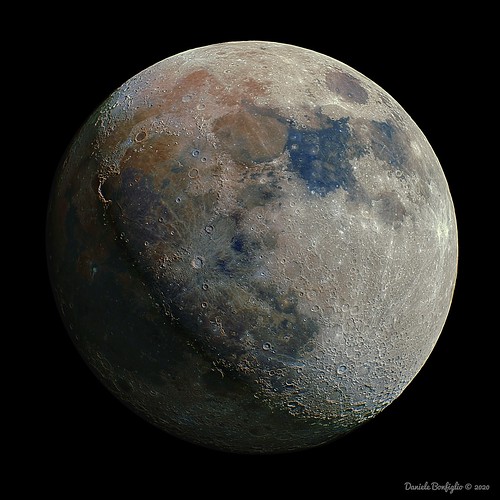 apod_submission_mineral_moon_3D by Daniele Bonfiglio, su Flickr
apod_submission_mineral_moon_3D by Daniele Bonfiglio, su FlickrAuthor: Daniele Bonfiglio
Location: Montagnana (Italy)
Time: February 4 2020, 20:18 UT
Suggested title: our colorful Moon
Setup: Fujifilm x-t30 mirrorless camera attached to a Maksutov-Cassegrain telescope with 127 mm aperture and 1500 mm focal length.
Processing: stack of best 100 shots out of 400 and sharpening with the Autostakkert!3 software. Saturation of colours with GIMP (on a layer without sharpening to avoid introducing noise). To obtain the three dimensional effect, a second picture of the Moon (taken on February 7 2020 17.41 UT from the same location) was included as an opaque layer. The two Moon pictures where aligned with the WinJUPOS software before processing with GIMP (perfect alignment of moon features was not possible due to moon libration).
Best regards,
Daniele Bonfiglio
-
olivierr31
- Ensign
- Posts: 14
- Joined: Mon Sep 28, 2015 10:00 pm
- Location: Toulouse, France
- Contact:
Re: Submissions: 2020 February
NGC 2237 - Rosette nebula (Ha-SHO)
Location: Toulouse, France
Ha-SHO (Narrow band filters : 6nm)
Bin1x1 Ha:3h04', Bin2x2 OIII:52mn & SII:36mn exposure time
80/600 mm Refractor – Camera ZWO ASI1600MM Pro
Preprocessing with SIRIL
Image processing with Photoshop
Final touch with Lightroom
https://cdn.astrobin.com/thumbs/bAYyf3m ... XURFLk.jpg
https://www.astrobin.com/uruzie/0
Website : https://astrophoto.pagesperso-orange.fr
Location: Toulouse, France
Ha-SHO (Narrow band filters : 6nm)
Bin1x1 Ha:3h04', Bin2x2 OIII:52mn & SII:36mn exposure time
80/600 mm Refractor – Camera ZWO ASI1600MM Pro
Preprocessing with SIRIL
Image processing with Photoshop
Final touch with Lightroom
https://cdn.astrobin.com/thumbs/bAYyf3m ... XURFLk.jpg
https://www.astrobin.com/uruzie/0
Website : https://astrophoto.pagesperso-orange.fr
Last edited by bystander on Tue Feb 25, 2020 7:03 pm, edited 2 times in total.
Reason: Please, no hot links to images > 500Kb. Substituted smaller image.
Reason: Please, no hot links to images > 500Kb. Substituted smaller image.
Re: Submissions: 2020 February
 Away from it all - Zodiacal Light by Harles99, on Flickr
Away from it all - Zodiacal Light by Harles99, on FlickrBack in February of 2011 I took my first photo of the Zodiacal light. The Zodiacal light is the triangular cone of diffused light that extends up from the from the ecliptic sunlight reflecting off dust grains that circle the sun in the inner solar system. These grains are thought to be left over from the process that created our Earth and the other planets of our solar system 4.5 billion years ago. It is Simply Amazing. I always look forward to late winter to view the Zodiacal Light.
Shot on a Nikon D4s & Nikkor 14-24mm F2.8 @f2.8. 30" Exposure.
©Harles 2020
NGC 2264
Copyights: Raul Villaverde, Domingo Pestana y Nicolas Romo
 ngc_2264_RGB_Halfa_2020CROP by Raul Villaverde, en Flickr
ngc_2264_RGB_Halfa_2020CROP by Raul Villaverde, en Flickr
 ngc_2264_RGB_Halfa_2020CROP by Raul Villaverde, en Flickr
ngc_2264_RGB_Halfa_2020CROP by Raul Villaverde, en FlickrRe: Submissions: 2020 February
Miguel Sánchez, this is your first picture here and it is brilliant!sangon wrote: ↑Tue Feb 11, 2020 11:23 am Hi folks
Here I share with you our version of the popular Tarantula Nebula,
Also known as 30 Doradus and NGC 2070, is a large region of ionized gas surrounding a collection of newly-forming stars at the Large Magellanic Cloud. It is being said that if it were as close to Earth as the Orion Nebula it would take up the same area in the sky as 60 full moons and would be bright enough to cast shadows on the ground. In fact, it is the most active and complex star formation region known within the Local Group galaxies.
It was taken from a remote observatory in Chile (about 2h narrowband exposure, 30min Ha, 30min O3, 60 min S2) during the 7th and 8th February 2020. Channels stacked with DSS, combined with MaximDL, and finally processed with Adobe Photoshop.
We hope you like it.
Miguel Sánchez (Sociedad Astronómica Granadina)
Link: https://www.dropbox.com/s/5ob7t0vjn5s8z ... s.jpg?dl=0

Ann
Color Commentator
Re: Submissions: 2020 February
February is almost up, and I'm going to comment on some of my favorites here!
Wu Zhuoqun, that's a very fine Pencil Nebula.
Daniel Hightower, glad to see you back here, and that's a nice portrait of IC 342.
Litobrit, that's a stunning Orion Nebula!
Paolo Demaria, that's a very fine portrait of all the curious nebulosities surrounding the Horsehead Region and Orion's Belt.
Sebastian Voltmer, that's a stunningly beautiful solar eclipse sky!
Mark Hanson, I've praised your picture of NGC 3628 with tail before, but the more I look at it, the more fantastic it becomes. You richly deserves having this and others of your pictures be a part of the science of astronomy, so that it is not just a pretty picture.
AlessandroCantarelli, I just love that picture. Not only is it evocative and atmospheric, but I love the fact that the Milky Way above is so detailed and full of recognizable stars and nebulas. Yes, I understand that your picture is a composite. So what!!!
astrodoc, good to see you back here with a very fine picture of NGC 5128, Centaurus A!
Bogdan Borz, that's an absolutely stunning image of M78! Simply fantastic and so beautiful!
Matt Dieterich, that is also a very fine picture of Centaurus A!
Nick Pavelchak, I love the colors of your picture of "the Fly"!
Tommaso Massimo Stella, that's a beautiful picture of M78!
noodle, good to see you back here with a fine picture of the Heart Nebula!
mr1337, that a very fine picture of the Gabriela Mistral Nebula and surroundings!
Bogdan Borz, I love that juxtaposition of the Seagull Nebula and Thor's Helmet!
Emanuele Balboni, that is such a beautiful and evocative picture of a man balancing on a ledge jutting out over a precipice, contemplating the night sky and Orion. I love the fact that we can see the higher-than-average stellar density of the winter Milky Way at left.
Graeme Coates, I love your Beehive Cluster!
BackyardAstronomy2018, well done taking a fine picture of the Orion Nebula with your modest equipment.
Masahiro Miyasaka, I absolutely love your picture of the crispy clear star-bright night sky over a wintry Earth landscape. It's magical, indeed!
Bob Lockwood, nice seeing you here again with two fine new pictures.
Efrem Frigeni, I like the OIII details in the otherwise very red IC 443 supernova remnant.
Jean-Baptiste Auroux, I like the fact that your picture shows us NGC 3077 along with famous galaxies M81 and M82. I like the details in M81 and M82, and I like the IFN. And I can't resist your blue reflection nebula of NGC 5367!
Kinch, that's an interesting portrait of cluster NGC 2259, but it's an even more interesting portrait of that nebula. I thought at first that it was a reflection nebula because it's blue, but it is an emission nebula taken through Ha/OIII/SII filters. Does the blue color mean Ha here? Because if it means OIII, then whatever ionizes that nebula must be very powerful. Well, interesting, in any case!
David Wills, your second post here is a fine portrait of the Whirlpool Galaxy, M51 and friend!
Tamas Abraham, that's a fine crescent Moon with Earthshine, illuminating a cloud bank!
Celfosc, it's your first post here and it's a very fine portrait of Thor's Helmet!
Iaffaldano Giuseppe Carmine, you captured some very fine details in the Antennae Galaxies, NGC 4038-4039.
Iaffaldano Giuseppe Carmine, I love your picture of Venus illuminating a cloud band and turning it into a reflection nebula. And I love the contrast between the Pleiades and the Andromeda Galaxy!
kolec, that's a fine picture of NGC 2264.
Masahiro Miyasaka, I like your Magic Mountain Seven Stars. I like the fine portrait of the Big Dipper, and I really like seeing the Coma star cluster in Coma Berenices.
vendetta, that's a fine composition with the abandoned(?) train car and the vast Milky Way above it.
Kfir Simon, I completely love your picture of the Christmas tree and Cone nebula region. The exquisite details and stunning mostly RGB colors are so, so much my thing!
KuriousGeorge, you have posted so many great galaxy pictures here, and I love it. Your portrait of the Hickson group 44 is just one beautiful example. I love it. This group contains galaxies of "all sorts", a spiral, a "ring galaxy", a lenticular galaxy and an elliptical. You do them full justice. I love it!
daniele.bonfiglio, that's a stunningly beautiful Moon. What if the Moon actually looked like this when we watch it through binoculars and telescopes? Just imagine.
Again, thank to everyone who provided such great and beautiful pictures to Starship Asterisk* this month!
Ann
Wu Zhuoqun, that's a very fine Pencil Nebula.
Daniel Hightower, glad to see you back here, and that's a nice portrait of IC 342.
Litobrit, that's a stunning Orion Nebula!
Paolo Demaria, that's a very fine portrait of all the curious nebulosities surrounding the Horsehead Region and Orion's Belt.
Sebastian Voltmer, that's a stunningly beautiful solar eclipse sky!
Mark Hanson, I've praised your picture of NGC 3628 with tail before, but the more I look at it, the more fantastic it becomes. You richly deserves having this and others of your pictures be a part of the science of astronomy, so that it is not just a pretty picture.
AlessandroCantarelli, I just love that picture. Not only is it evocative and atmospheric, but I love the fact that the Milky Way above is so detailed and full of recognizable stars and nebulas. Yes, I understand that your picture is a composite. So what!!!
astrodoc, good to see you back here with a very fine picture of NGC 5128, Centaurus A!
Bogdan Borz, that's an absolutely stunning image of M78! Simply fantastic and so beautiful!
Matt Dieterich, that is also a very fine picture of Centaurus A!
Nick Pavelchak, I love the colors of your picture of "the Fly"!
Tommaso Massimo Stella, that's a beautiful picture of M78!
noodle, good to see you back here with a fine picture of the Heart Nebula!
mr1337, that a very fine picture of the Gabriela Mistral Nebula and surroundings!
Bogdan Borz, I love that juxtaposition of the Seagull Nebula and Thor's Helmet!
Emanuele Balboni, that is such a beautiful and evocative picture of a man balancing on a ledge jutting out over a precipice, contemplating the night sky and Orion. I love the fact that we can see the higher-than-average stellar density of the winter Milky Way at left.
Graeme Coates, I love your Beehive Cluster!
BackyardAstronomy2018, well done taking a fine picture of the Orion Nebula with your modest equipment.
Masahiro Miyasaka, I absolutely love your picture of the crispy clear star-bright night sky over a wintry Earth landscape. It's magical, indeed!
Bob Lockwood, nice seeing you here again with two fine new pictures.
Efrem Frigeni, I like the OIII details in the otherwise very red IC 443 supernova remnant.
Jean-Baptiste Auroux, I like the fact that your picture shows us NGC 3077 along with famous galaxies M81 and M82. I like the details in M81 and M82, and I like the IFN. And I can't resist your blue reflection nebula of NGC 5367!
Kinch, that's an interesting portrait of cluster NGC 2259, but it's an even more interesting portrait of that nebula. I thought at first that it was a reflection nebula because it's blue, but it is an emission nebula taken through Ha/OIII/SII filters. Does the blue color mean Ha here? Because if it means OIII, then whatever ionizes that nebula must be very powerful. Well, interesting, in any case!
David Wills, your second post here is a fine portrait of the Whirlpool Galaxy, M51 and friend!
Tamas Abraham, that's a fine crescent Moon with Earthshine, illuminating a cloud bank!
Celfosc, it's your first post here and it's a very fine portrait of Thor's Helmet!
Iaffaldano Giuseppe Carmine, you captured some very fine details in the Antennae Galaxies, NGC 4038-4039.
Iaffaldano Giuseppe Carmine, I love your picture of Venus illuminating a cloud band and turning it into a reflection nebula. And I love the contrast between the Pleiades and the Andromeda Galaxy!
kolec, that's a fine picture of NGC 2264.
Masahiro Miyasaka, I like your Magic Mountain Seven Stars. I like the fine portrait of the Big Dipper, and I really like seeing the Coma star cluster in Coma Berenices.
vendetta, that's a fine composition with the abandoned(?) train car and the vast Milky Way above it.
Kfir Simon, I completely love your picture of the Christmas tree and Cone nebula region. The exquisite details and stunning mostly RGB colors are so, so much my thing!
KuriousGeorge, you have posted so many great galaxy pictures here, and I love it. Your portrait of the Hickson group 44 is just one beautiful example. I love it. This group contains galaxies of "all sorts", a spiral, a "ring galaxy", a lenticular galaxy and an elliptical. You do them full justice. I love it!
daniele.bonfiglio, that's a stunningly beautiful Moon. What if the Moon actually looked like this when we watch it through binoculars and telescopes? Just imagine.
Again, thank to everyone who provided such great and beautiful pictures to Starship Asterisk* this month!
Ann
Color Commentator
-
tommasostella
- Ensign
- Posts: 60
- Joined: Mon Nov 11, 2019 4:34 pm
Re: Submissions: 2020 February
Bode's galaxy M81
Copyright: Tommaso Massimo Stella
This image is a merge between the narrow field one made with tiny ASI 224mc camera and the wide field shots acquired with ASI 294mc.
Only short exposures and no autoguide.
Below is the list of shots.
ASI 224mc
530 x 15s (40 Dark, 101 Bias, No Flat) gain 300/600
140 x 40s (22 Dark, 130 Bias, No Flat) gain 350/600
24 x 60s (5 Dark, 101 Bias, No Flat) gain 300/600
436 x 30s (106 Dark, 148 Bias, No Flat) gain 330/600
Total exposure time for the M81: 7h 50m
ASI 294mc Pro
167x30s (59 Dark, 0 Bias, 55 Flat) gain 350/600 @ -15°
Total exposure time for the background: 83m
Telescope: Skywatcher 200/800 WidePhoto, Camera: ZWO ASI 224mc + ZWO ASI 294mc Pro
Mount: Skywatcher AZ-EQ6 GT, No Autoguiding.
GPU Aplanatic coma corrector, UV/IR Cut filter.
Processing: DeepSkyStacker, Photoshop CC, PixInsight
Copyright: Tommaso Massimo Stella
This image is a merge between the narrow field one made with tiny ASI 224mc camera and the wide field shots acquired with ASI 294mc.
Only short exposures and no autoguide.
Below is the list of shots.
ASI 224mc
530 x 15s (40 Dark, 101 Bias, No Flat) gain 300/600
140 x 40s (22 Dark, 130 Bias, No Flat) gain 350/600
24 x 60s (5 Dark, 101 Bias, No Flat) gain 300/600
436 x 30s (106 Dark, 148 Bias, No Flat) gain 330/600
Total exposure time for the M81: 7h 50m
ASI 294mc Pro
167x30s (59 Dark, 0 Bias, 55 Flat) gain 350/600 @ -15°
Total exposure time for the background: 83m
Telescope: Skywatcher 200/800 WidePhoto, Camera: ZWO ASI 224mc + ZWO ASI 294mc Pro
Mount: Skywatcher AZ-EQ6 GT, No Autoguiding.
GPU Aplanatic coma corrector, UV/IR Cut filter.
Processing: DeepSkyStacker, Photoshop CC, PixInsight
Re: Submissions: 2020 February
Orion 360
https://www.bastienfoucher.com
Copyright: Bastien Foucher
A 360 mega pixels, 24 tiles, almost 76 hours of total exposure image of the Orion constellation.
A zoomable picture is here : http://www.astrosurf.com/bastienfoucher ... creen.html
An annotated zoomable picture is here : http://www.astrosurf.com/bastienfoucher ... tated.html
A 6000 pixel wide version: https://photos.smugmug.com/Astrophotogr ... /Orion.jpg
A 3000 pixel wide version, in portrait format: https://photos.smugmug.com/photos/i-GxV ... xVzRRW.jpg
Bastien
https://www.bastienfoucher.com
Copyright: Bastien Foucher
A 360 mega pixels, 24 tiles, almost 76 hours of total exposure image of the Orion constellation.
A zoomable picture is here : http://www.astrosurf.com/bastienfoucher ... creen.html
An annotated zoomable picture is here : http://www.astrosurf.com/bastienfoucher ... tated.html
A 6000 pixel wide version: https://photos.smugmug.com/Astrophotogr ... /Orion.jpg
A 3000 pixel wide version, in portrait format: https://photos.smugmug.com/photos/i-GxV ... xVzRRW.jpg
Bastien
Re: Submissions: 2020 February
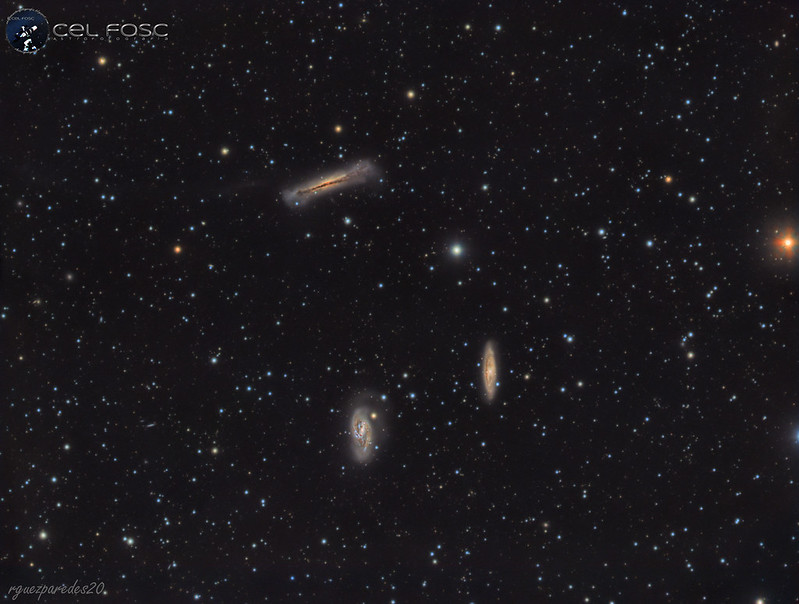
Trío de Leo by Cel Fosc, en Flickr
Trío de Leo es un pequeño grupo de galaxias situado a unos 35 millones de años luz en la constelación de Leo.
Lo forman M65, M66 y NGC3628.
El equipo empleado fue...
Telescopio: ED80 Sky Watcher + 0.85X
Montura: LXD75 Meade
Cámara: QHY163m
Guiado: MiniScope 50mm Orion, CámaraGuia/QHY5 L-II c
Adquisición: APT (AstroPhotographyTool) 3.70
Apilado y procesado: PixInsight, Photoshop
Tomas
L: 34x600s 2x900s 22x180s
RGB: 20x180s
Expo L: 7 h 16 min
Total Expo: 10 h 16 min
Temperatura sensor: -10°C
Distancia Focal: 510mm
F/ 6,3
Re: Submissions: 2020 February
Bastien Foucher,Goudig wrote: ↑Wed Feb 26, 2020 6:53 pm Orion 360
https://www.bastienfoucher.com
Copyright: Bastien Foucher
A 360 mega pixels, 24 tiles, almost 76 hours of total exposure image of the Orion constellation.
A zoomable picture is here : http://www.astrosurf.com/bastienfoucher ... creen.html
An annotated zoomable picture is here : http://www.astrosurf.com/bastienfoucher ... tated.html
A 6000 pixel wide version: https://photos.smugmug.com/Astrophotogr ... /Orion.jpg
A 3000 pixel wide version, in portrait format: https://photos.smugmug.com/photos/i-GxV ... xVzRRW.jpg
Bastien
Yours is another of those fantastic Orion constellation portraits. There have been a few others. Yours is still splendid.
What sets your Orion constellation portrait apart is that it really shows us a faint Betelgeuse. So your Orion portrait is more "historical" than some of the others, provided that Betelgeuse returns to "normal" again. I think it will.
Anyway, thank you so much for this superb Orion portrait!
Ann
Color Commentator
-
John_Renaud
- Asternaut
- Posts: 2
- Joined: Sat Sep 22, 2018 6:40 pm
Re: Submissions: 2020 February
Sharpless 171
© John Renaud
https://cdn.astrobin.com/thumbs/KcJumMx ... 60ckvo.jpg
This is an image of Sharpless 171 taken with a Sky-Watcher Esprit 150mm ED Triple APO and FLI ML16200 through SII, H-alpha and OIII filters. Total imaging time was 59 hours. You can access a higher resolution version and additional details here:
https://www.astrobin.com/qfgf4g/0/
Clear skies!
© John Renaud
https://cdn.astrobin.com/thumbs/KcJumMx ... 60ckvo.jpg
This is an image of Sharpless 171 taken with a Sky-Watcher Esprit 150mm ED Triple APO and FLI ML16200 through SII, H-alpha and OIII filters. Total imaging time was 59 hours. You can access a higher resolution version and additional details here:
https://www.astrobin.com/qfgf4g/0/
Clear skies!
Last edited by bystander on Fri Feb 28, 2020 3:48 pm, edited 2 times in total.
Reason: Please, no hot links to images > 500Kb. Substituted smaller image.
Reason: Please, no hot links to images > 500Kb. Substituted smaller image.
-
prashant_naik
- Ensign
- Posts: 26
- Joined: Thu Nov 07, 2019 2:26 am
Re: Submissions: 2020 February
Dancing at the edge of the World!
Date: August 11, 2018. This is a stacked composition of 20 images captured at East Pocket, Flagstaff.
Nikon D810, 14 mm; Exposure f2.8, 13sec at ISO 10000.
 Dancing at the edge of the World! by Prashant Naik, on Flickr
Dancing at the edge of the World! by Prashant Naik, on Flickr
© Prashant Naik
https://www.naikonpixels.com/
https://www.instagram.com/naikonpixels/
https://www.facebook.com/naikonpixels
Thanks!
Prashant Naik
Date: August 11, 2018. This is a stacked composition of 20 images captured at East Pocket, Flagstaff.
Nikon D810, 14 mm; Exposure f2.8, 13sec at ISO 10000.
 Dancing at the edge of the World! by Prashant Naik, on Flickr
Dancing at the edge of the World! by Prashant Naik, on Flickr© Prashant Naik
https://www.naikonpixels.com/
https://www.instagram.com/naikonpixels/
https://www.facebook.com/naikonpixels
Thanks!
Prashant Naik
Re: Submissions: 2020 February
Hidden galaxy!

Setup:
RC12GSO su EQ8
CCD G24000-Astrodon Filter LRGB
104x600s - L
56x600s - Ha
24x300s - R
24x300s - G
24x300s - B
Processed using Pixinsight/Photoshop
Frames taken in late december 2019 and stacked from more than 32 hours from our remote observatory.
Paolo Zampolini and GIorgio Mazzacurati
https://sites.google.com/view/3zobservatory

Setup:
RC12GSO su EQ8
CCD G24000-Astrodon Filter LRGB
104x600s - L
56x600s - Ha
24x300s - R
24x300s - G
24x300s - B
Processed using Pixinsight/Photoshop
Frames taken in late december 2019 and stacked from more than 32 hours from our remote observatory.
Paolo Zampolini and GIorgio Mazzacurati
https://sites.google.com/view/3zobservatory




